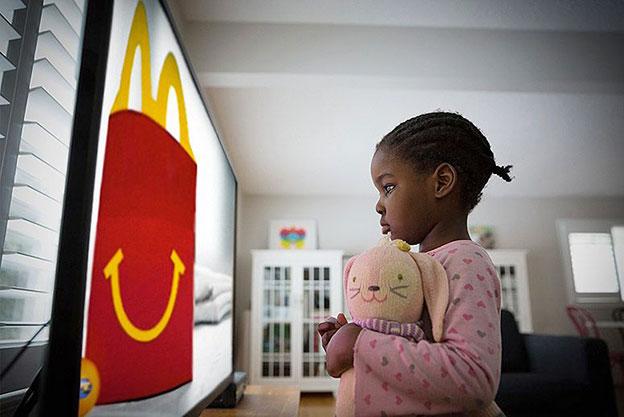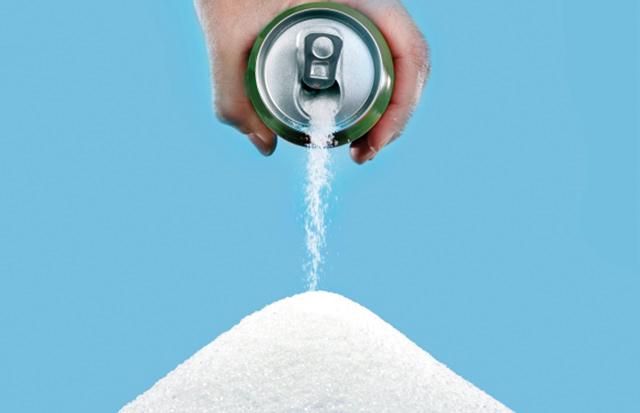You are here
Sports ‘sponsorships’ often promote junk food to children
By Reuters - Mar 27,2018 - Last updated at Mar 27,2018

Photo courtesy of takepart.com
Three in four food advertisements and half of drink promotions during major US sports programmes peddle high-calorie, sugary products, a new study suggests.
“There is an inherent message in sports about the importance of physical fitness and health, and diet is a huge part of fitness and health,” lead study author Marie Bragg said by e-mail. “Having highly visible sports organisations serve as a vehicle for promoting junk food to children sends a mixed message that is incompatible with maintaining a healthy diet.”
Bragg, a researcher at New York University, and colleagues focused on the ten sports organisations with the most viewers under 18 years old, including professional leagues for American football, baseball, football, hockey, golf, mixed martial arts and car racing as well as college basketball and amateur baseball.
Researchers then identified advertisements or sponsorships promoting food or nonalcoholic beverages on television, YouTube, and sports organisations websites from 2006 to 2016.
Overall, food and non-alcoholic drinks accounted for 19 per cent of sponsors, second only to auto industry sponsors, researchers report in Pediatrics.
The National Football League had the most food and beverage sponsors, with a total of ten, followed by the National Hockey League and Little League, with seven apiece.
When researchers rated the nutritional content of these products, they found 76 per cent of foods were unhealthy and 52 per cent of drinks were sodas or other beverages sweetened with sugar.
“I think we saw so many sodas appearing in sponsorship ads because bottled water does not have profit margins as high as sugary drinks, and consumers aren’t as loyal to a specific water brand as they are to their favourite soda brand,” Bragg said. “People know they are a ‘Coke’ or a ‘Pepsi’ person, but often don’t feel the same way about water brands.”
The proportion of US children who are overweight and obese has been steadily climbing for years. As of 2016, about 35 per cent of children were overweight and another 26 per cent were obese, a recent study found.
While there are many reasons for this — including too much screen time and not enough exercise — poor eating and drinking habits play a big role.
Even when soda and junk food advertisements do not directly target children, kids are more easily swayed to crave products than adult viewers, researchers say.
“Children who view advertisements for highly palatable foods such as chips or candy as part of TV shows or within video games will eat more snack foods, even if they already had a meal,” said Jennifer Emond, a researcher at the Geisel School of Medicine at Dartmouth College in Lebanon, New Hampshire, who was not involved in the study.
“We call this cued eating,” Emond said by e-mail. “We see this in children as young as preschool-age.”
One limitation of the study is that researchers did not look separately at sponsorship appearances within games, on the sidelines, or brands mentioned by announcers during televised games, the authors note. Another drawback is that researchers were not able to distinguish between unique viewers and repeat viewers on YouTube.
Still, the results suggest that parents need to realise that children who sit down to watch sports are seeing much more than just a game, said Dr Megan Pesch, a researcher at the University of Michigan’s C.S. Mott Children’s Hospital in Ann Arbor.
“Children are not always able to detect what is an advertisement versus what is not,” Pesch, who was not involved in the study, said by e-mail. “Parents can explain, in simple terms, to their children that the athlete is paid by the company to promote the products, and what the marketers are trying to do, namely make money.”
Putting out reasonable portions of healthy snacks during the game may also help.
“Parents can also use this an opportunity to talk to their children about the importance of eating unhealthy foods in moderation, focusing on the importance of eating mostly healthy foods with the occasional ‘fun’ food,” Pesch added.
Related Articles
One in five US children and young adults do not drink any water at all on a typical day, and a new study suggests they consume almost twice
People who drink lots of sugar-sweetened soda and fruit juices may be more likely to develop chronic kidney disease than those who don’t, a
Children are a vulnerable consumer group. Before the age of seven, a child cannot identify false persuasive content in advertisements. This is why children’s exposure to ads early in life influences their food preferences. It’s no coincidence that food and beverage advertisers include popular figures and cartoon characters in their ads.
















